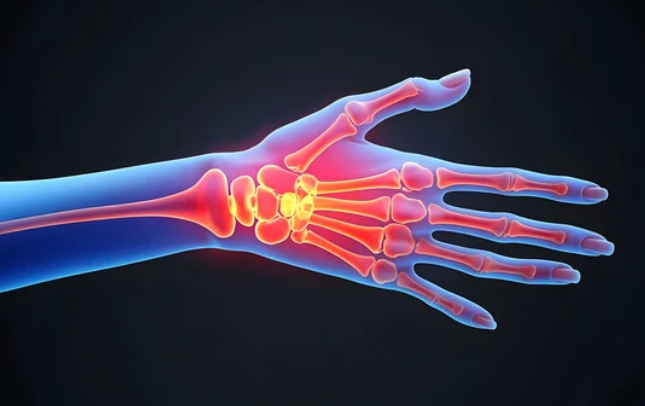
As a hair professional, your hands are your livelihood. Every day, you perform hundreds of precise movements with styling tools, creating beautiful looks for your clients. But this repetitive motion comes with a hidden cost that many stylists discover too late: repetitive strain injury (RSI).
Understanding RSI and taking preventive measures now can save your career and keep you working comfortably for decades to come.
Understanding Repetitive Strain Injury in Hair Professionals
Repetitive strain injury develops when you perform the same motions over and over, causing microscopic damage to muscles, tendons, and nerves. For hair professionals, this typically affects the hands, wrists, forearms, shoulders, and neck.
The symptoms often start subtly. You might notice occasional stiffness in your wrist after a busy day or slight tingling in your fingers during your morning coffee. Many stylists dismiss these early warning signs as normal fatigue, but RSI typically worsens without intervention.
Common RSI symptoms include persistent aching, burning sensations, muscle weakness, reduced grip strength, and numbness or tingling. In severe cases, the pain can become debilitating, forcing talented professionals to leave the industry entirely.
Why Hair Stylists Are at High Risk
The nature of hairstyling creates a perfect storm for RSI development. You spend hours holding your arms elevated, gripping tools tightly, and making precise movements. Add poor ergonomics, inadequate breaks, and heavy or poorly designed tools, and the risk multiplies significantly.
Research shows that hairstylists experience RSI at rates comparable to computer workers and assembly line employees. The difference is that many stylists work as independent contractors without access to workplace safety resources or ergonomic training.
Your work environment also plays a crucial role. Standing for long periods, reaching across clients, and working in awkward positions to achieve the perfect angle all contribute to strain accumulation. The cumulative effect of these factors makes prevention essential rather than optional.
The Hidden Costs of Ignoring RSI
Beyond the obvious physical discomfort, RSI can devastate your professional life. Many stylists find themselves unable to work full schedules, leading to significant income loss. Some must turn away clients or limit their services, affecting their reputation and business growth.
The financial impact extends to medical bills, physical therapy costs, and potential career changes. Some professionals invest thousands in treatments, only to find that prevention would have been far more cost-effective.
More importantly, RSI can rob you of the joy in your craft. When every movement causes pain, the creative satisfaction that drew you to hairstyling diminishes.
Prevention Strategies That Actually Work
The good news is that RSI is largely preventable with proper awareness and technique adjustments. Start by evaluating your workspace ergonomics. Ensure your styling chair adjusts to bring clients to the right height, minimizing awkward reaching and bending.
Take regular micro-breaks throughout your day. Even 30-second pauses between clients to stretch your hands and shake out tension can make a significant difference. Incorporate hand and wrist stretches into your routine, focusing on movements that counteract your typical working positions.
Your tool selection plays a crucial role in prevention. Heavy, poorly balanced tools force your muscles to work harder and increase strain. Tools designed by professionals who understand the demands of salon work, like those from Mint Tools, prioritize ergonomic design and user comfort. When tools feel right in your hands and require less grip strength, you naturally reduce your RSI risk.
Choosing the Right Tools for Long-Term Health
Professional-grade tools engineered with ergonomics in mind can significantly reduce your RSI risk. Look for lightweight designs with balanced weight distribution and comfortable grips that reduce the need for excessive hand tension.
Advanced technologies like ceramic barrels and ionic generators not only improve styling results but often require less manipulation and reworking, reducing the total number of repetitive movements needed for each style.
Quality tools built for durability also maintain their performance characteristics over time. When tools become worn or unbalanced, they often require more force to achieve the same results, increasing strain on your body.
Building Sustainable Work Habits
Creating sustainable work habits requires intentional changes to your daily routine. Schedule longer breaks between intensive services when possible, and consider alternating between different types of appointments to vary your movements.
Strengthen the muscles that support your hands and arms through targeted exercises. Physical therapists often recommend specific routines for professionals at high RSI risk. Many of these exercises can be done at home in just a few minutes daily.
Pay attention to your body’s signals. Early intervention when you notice stiffness or discomfort is far more effective than waiting until symptoms become severe.
Your career in the beauty industry can span decades when you take care of your body. Investing in prevention today ensures you can continue creating beautiful styles while maintaining your health and comfort.
For more insights on maintaining a successful career in the beauty industry, visit https://www.mintprotools.com/